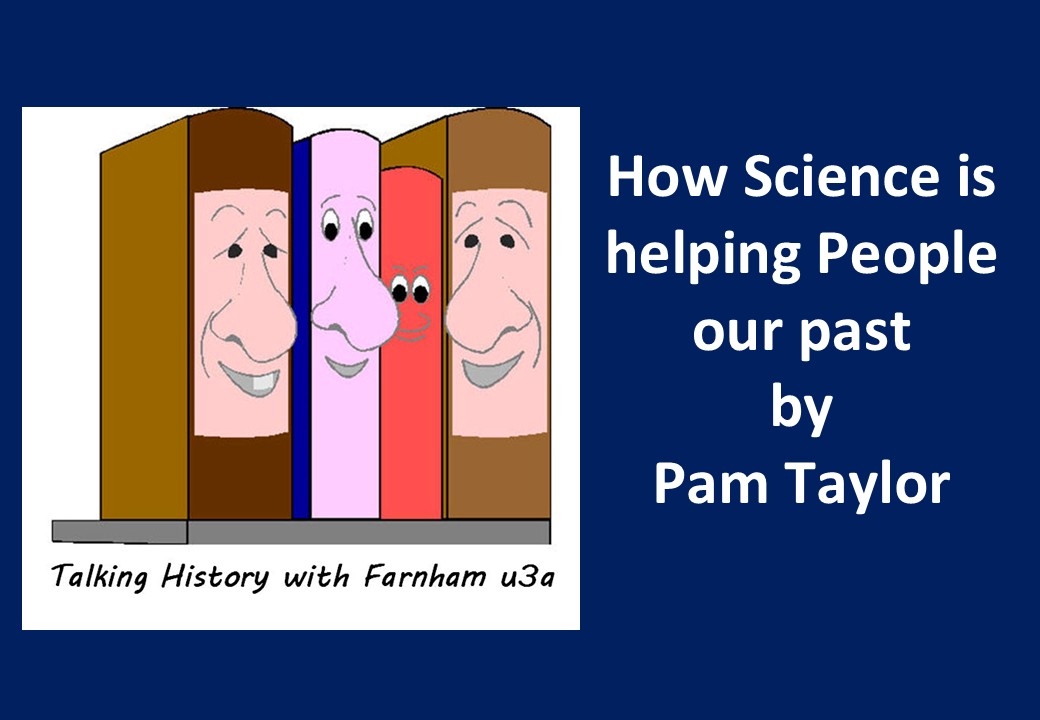Podcast: Play in new window | Download (Duration: 44:13 — 40.5MB)
Season 2024 – Talk 03 – How Science is helping people our past
In ‘How Science is helping people our past‘ Pam Taylor tells us that we don’t often have talks about archaeology. She also says it’s not all about grubbing around in the dirt.
After the grubbing around in the dirt:
Pam’s interest began in the 1970s with an evening class at Farnborough Tech. She then moves on to the Royal Aircraft Establishment Archaeological Society, active in digging at local sites.
She admits that there is a lot of grubbing around in the dirt, but says that she doesn’t do it. Her interest is in looking at the results of grubbing around in the dirt.
Archaeology has developed over the last few centuries, going from antiquarian interest to involving many scientific techniques today.
Carbon 14 dating and X Rays:
In the 1970s the use of science was limited to Carbon 14 dating; at the time very expensive for a local society. This gives a date for organic material such as plants, trees, people and animals.
X ray techniques were sometimes used, for example, on Egyptian mummies.
Prior to this, dating used stratification. The depth of an object and the sequence leading to it. This means finding undisturbed layers in the soil and is not always accurate.
As time passes other techniques, such as MRI and CT scanning come into use along with DNA analysis.
Tracing peoples’ movements:
These scientific techniques all lead to a greater understanding of how the distribution and mixing of different genetic traits took place across the world.
Listen to Pam tell us the full story.
About this podcast:
This is an edited recording of a talk given to the Farnham u3a World History: Ancient, Medieval and Modern Group.
This podcast is also available through Amazon Music, Apple Podcasts, Castbox, Deezer, Podchaser, Spotify, Stitcher , Vurbl , You Tube and others.
AKM Music licenses Media Magazine for use with this talk.
© The MrT Podcast Studio and the Farnham u3a World History: Ancient, Medieval and Modern Group 2018 – 2025

